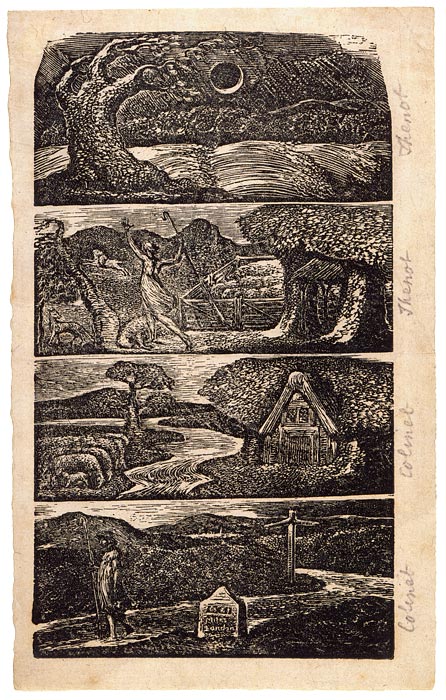
In about 1820 Blake designed seventeen small wood engravings for a textbook translation of Virgil. He engraved all but three of them himself as well as six copperplate images. A new medium for Blake, the small wood engravings were highly esteemed by the Ancients, especially Edward Calvert, several of whose small pastoral images appear in this case.
In 1825 John Linnell had purchased Blake's wood blocks (for 2 guineas) and had them printed by Calvert. Linnell and his family continued to publish them occasionally into the middle of the nineteenth century. The blocks were acquired by the British Museum in 1939.
